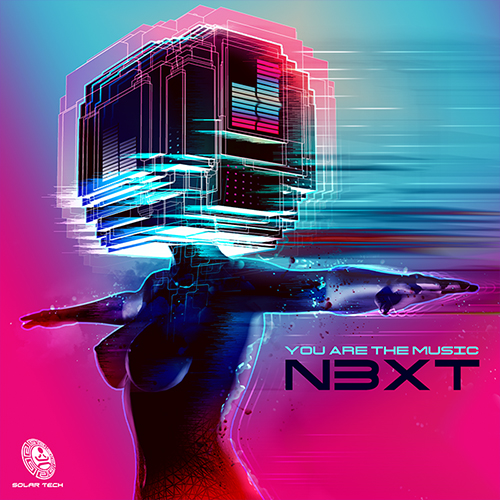-
 play_arrow
play_arrow
Clubalicious Clubalicious Radio
-
 play_arrow
play_arrow
London Calling Podcast Yana Bolder

(Note: This column originally appeared in the August issue of Mix.)
Sometime back in the mid-2000s, my brother-in-law Rick turned me on to a book called How the Irish Saved Western Civilization, by the best-selling author Thomas Cahill. It’s a fun read as far as popular, historical nonfiction goes, and though its claims may be overstated at times (surely there were others working on the same thing) and its interpretations may skew in favor of St. Patrick, St. Augustine and others, its basic premise is sound. And that premise is this:
When the Roman Empire was falling, ushering in the Dark Ages, education, and most certainly the recording and preservation of knowledge, fell out of fashion for the next 600 years or so. Seeing this, the new monastic orders of Ireland, based on a foundation of education and the promotion of knowledge, began using their contacts on the Continent to smuggle every piece of text they could find to Ireland. There, over the next half a millennium, from the Isle of Man in the east to the shores of Galway in the west, monks and scribes began copying those books and scrolls—over and over and over. That’s how the Irish saved Western civilization
Now, in the past few weeks, a couple of things came across my desk that made me think of those monks in an entirely new light. Maybe, I thought, they loved their work, excited to be a part of the world’s first large-scale information backup. Maybe they realized that the simple physical storage medium of ink on paper was backward-compatible to the Rosetta Stone and early pictograms, and forward-compatible to the end of the human race, as long as it was properly preserved and then transferred with care to whatever distribution and storage systems might appear in the future.
READ MORE: Editor’s Note—Making the Connection.
The first item that made me rethink the monks was the news story from late-June that Paramount had quietly shuttered the MTVnews.com website, only to have it blow up into a major story. Where did the 30 years of unique music news, journalism, photography and videos go? Was it gone forever? Writers and personalities for the site were enraged and went public, futurist pundits made comments, other music sites chimed in and we’re still in the middle of the fallout. In 2019, MySpace was back in the news with something similar, admitting that it had irreversibly lost 12 years worth of music and photos, affecting 14.2 million users and 53 million tracks. Just gone.
The sad truth is that situations like this occur daily across the media and entertainment industries, admittedly on a smaller scale. A small-town newspaper shuts down its digital archive to cut costs and can no longer find its physical assets after the new corporate owner takes over storage responsibilities. An early-Nineties regional punk music zine might have appeared very early on in the internet’s development, but unless you saved a physical copy of that particular issue, you are unlikely to find anything today.
The second thing that made me rethink the monks was reading this month’s feature by senior writer Steve Harvey, “It’s Time to Talk About Hard Drives,” the third in a series of recent pieces on Iron Mountain’s technological efforts surrounding the storage, preservation and archiving of music and media assets. It was a bit shocking, but not too surprising, to learn that during a recent inventory survey of media assets, they found that 20 percent of hard disk drives were unreadable. It’s not Iron Mountain’s fault; the drives were brought in that way and there’s only so much they can do if a disk doesn’t spin or a root system file is corrupted. If a song from the mid-to-late ’90s was recorded, mixed, mastered and distributed all-digital, never touching a physical medium, there’s no guarantee that it will play back in 2024, or that the assets will ever be recovered.
Robert Koszela, director of North American Studio Operations at Iron Mountain, has seen it all in nearly 30 years as a media archivist, from issues with tape through today’s most up-to-date preservation and restoration technologies. He’s not up late at night worrying about doomsday scenarios, and he doesn’t believe the sky is falling—so when he issues an industry-wide call for awareness and action regarding digital storage and playback, it’s best to pay attention
I’m no Chicken Little either, and by no means am I advocating a return to paper storage and photos that are picked up at a lab. I believe that with a little digital and physical sleuthing, many assets can be recovered.
But it’s also true that the vast majority of people today suffer from a false sense of security that when they hit Save or Send that information is digital and now available forever. That’s simply not true. Talk of the Digital Dark Ages first popped up in the mid-’90s to describe the counterintuitive concept that with all the digital technologies available today, and with storage increasing in capacity and decreasing in price year after year, we are actually losing large chunks of the historical record on a daily basis. That makes no sense, yet it’s true.
At the end of the day, all you can really do is pay attention to your assets and do your best to future-proof them for all formats yet to come. Then backup, backup, backup. If that proves too time-consuming, you might try asking a monk for help. They have a pretty good track record.
Written by: Admin
Similar posts
Recent Posts
- 🎶 New Music: JID, OneRepublic, Morgan Wallen, Post Malone, MarkCutz, Kidd Spin + More!
- Classic Tracks: The Fireballs’ “Sugar Shack”
- Classic Tracks: Arlo Guthrie’s “City of New Orleans”
- Classic Track: k.d. lang’s “Constant Craving”
- Classic Tracks: Waylon Jennings’ “Are You Sure Hank Done It This Way”
Recent Comments
No comments to show.Featured post

Latest posts

🎶 New Music: JID, OneRepublic, Morgan Wallen, Post Malone, MarkCutz, Kidd Spin + More!

Classic Tracks: The Fireballs’ “Sugar Shack”

Classic Tracks: Arlo Guthrie’s “City of New Orleans”

Classic Track: k.d. lang’s “Constant Craving”

Classic Tracks: Waylon Jennings’ “Are You Sure Hank Done It This Way”
Current show
Upcoming shows

Uplifting Only
Ori Uplift
09:00 - 11:00
Fresh Is Fresh
This Weeks Hottest Releases
11:00 - 16:00
Sugar Radio
Robin Schulz
16:00 - 17:00
Swedish Dance Chart
17:00 - 19:00

Global Sessions
By Tom Cuffia
19:00 - 20:00Chart
Powered by Dee jay promotions visit us








 Invalid license, for more info click here
Invalid license, for more info click here